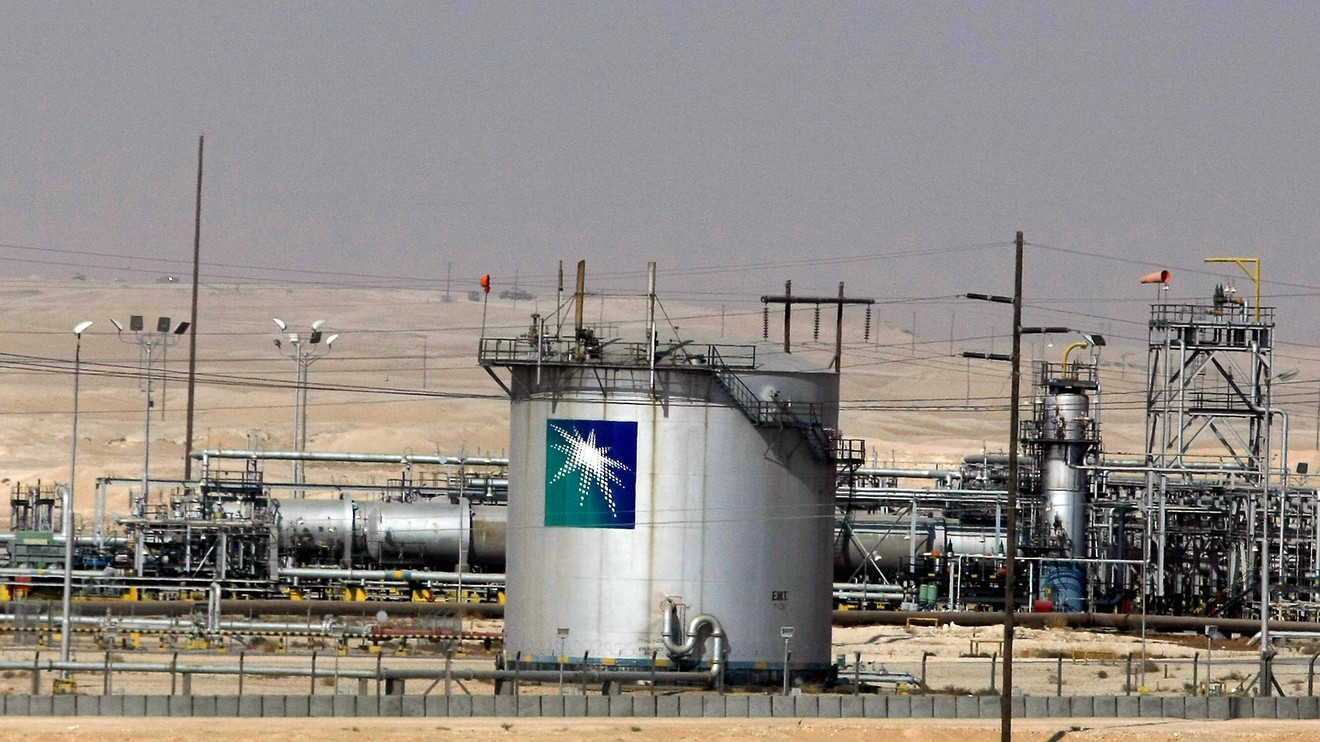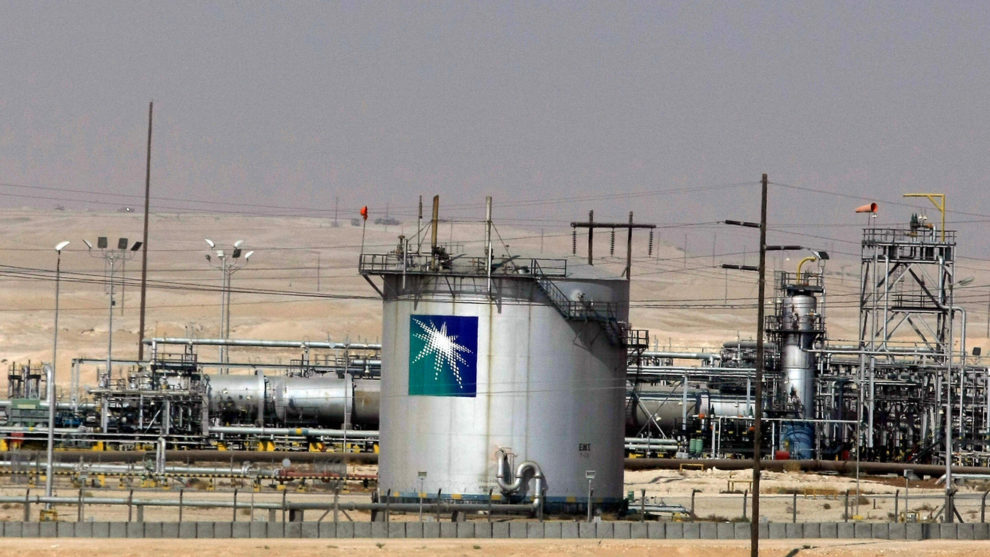
After three years of planning and several false starts, Saudi Arabia is in the final stages of preparing the much-hyped initial public offering of state-owned oil firm Saudi Aramco. The IPO was formally announced Sunday, with the aim of making its debut on the Kingdom’s Tadawul stock market by December.
The IPO has been delayed several times in parallel to big swings in the oil price this year. Investors were rattled in September by drone attacks on two of Aramco’s oil facilities temporarily in September halved Aramco’s output. More recently, Saudi has struggled to find anchor investors for its IPO which are crucial to securing demand.
Aramco is looking to sell just 1% to 2% of itself on Riyadh’s exchange, but this would still make it the world’s largest ever flotation worth more than $20 billion. An additional overseas listing may follow, with New York, London and Singapore all vying for the lucrative mandate.
The IPO is a central pillar of the reform program of Crown Prince Mohammed bin Salman (MBS). He believes Aramco is valued at $2 trillion, although several analysts and bankers have placed its value at closer to between $1.3 trillion and $1.5 trillion.
These are some of the key points investors need to know:
The players
Saudi Arabia announced a series of government changes in August in preparation of the planned IPO of Aramco.
Yasir Al-Rumayyan: Chairman of Aramco. He is also head of the Public Investment Fund (PIF), Saudi’s powerful $320 billion sovereign-wealth fund. A close confidante of MBS, Al-Rumayyan is also chairman of Ma’aden 1211, +0.00%, the state mining company which is 65% owned by PIF. Mining is one of the key sectors MBS wants to develop as part of its economic reforms. In addition, Al-Rumayyan sits on the board of ride-hailing app Uber Technologies UBER, -0.41% and Japanese multinational SoftBank Group 9984, +0.05%.
Prince Abdulaziz bin Salman: Energy Minister. The crown prince’s older half-brother was appointed to the role, replacing Khalid Al-Falih who had previously overseen a $427 billion 10-year plan for Saudi’s industrial sector.
Bandar Al-Khorayef: Head of the Ministry of Industry and Mineral Resources. The Saudi government placed Al-Khorayef, a member of the board of directors of Saudi conglomerate Al-Khorayef Group, in the newly created role after the new ministry of industry and mineral resources was separated from the vast energy ministry. It will operate as an independent entity from 1 January 2020.
Fahd bin Mohammed Al-Essa: Head of the royal court, a powerful gatekeeper position in the absolute monarchy. He previously served in the Defense Ministry.
Amin Nasser: Chief Executive of Aramco. He has worked for the oil group for 30 years.
The numbers
Saudi Aramco is the most valuable company in the world, having generated $111 billion in net income in 2018 — nearly twice that of Apple, the world’s most profitable listed company, and more than that of the five biggest oil groups — ExxonMobil, XOM, +3.00%, Royal Dutch Shell XOM, +3.00% RDSA, +1.23% BP BP, +1.59% , Total TTA, +0.27% and Chevron CVX, +0.06% — combined.
Aramco published its first ever-half year earnings in August. It reported net income of $46.9 billion, a 12% fall from the $53 billion for the same period a year ago because of lower oil prices. It also said it would pay a special dividend of $20 billion to its biggest shareholder, the Saudi kingdom.
Aramco has huge reserves of 263 billion barrels of oil and 320 trillion cubic feet of natural gas, according to an independent audit which was commissioned to address the group’s lack of transparency.
The company has very low debt levels. It was the largest cash holder of all non-financial companies in the Europe, Middle East and Africa region in 2018, with €43 billion on its balance sheet, according to credit-ratings firm Moody’s. That compares with Apple’s AAPL, +2.84% cash balance ($245 billion) and Microsoft MSFT, +0.24% ($128 billion).
The risks
Geopolitical tensions in the Middle East pose a constant risk for investors. Saudi’s defense vulnerabilities were exposed in September after attacks on Aramco’s largest oil-processing facilities temporarily impacted about half of the oil group’s crude production. That prompted Fitch Ratings to downgrade Aramco’s credit by one notch to an ‘A’ rating. Riyadh and Washington blamed Iran for the attacks, a charge denied by Tehran.
Oil prices are expected to remain under pressure this year and next, according to a Reuters survey. The poll of 51 economists and analysts forecast Brent crude BRNF20, -0.47% would average $64.16 a barrel in 2019 and $62.38 next year.
Marshall Steeves, energy markets analyst at IHS Markit said: “For now, the impact on oil prices is likely marginal because the Kingdom may reign in production to support prices (probably without Russia) but in all likelihood they would have done this anyway. They have been seeking higher oil prices for three years probably in part to bolster the Aramco IPO price but also to maximize revenue. So that hasn’t changed.”
Investors also need to be aware of any influence the Saudi government may have over Aramco which has dozens of domestic subsidiaries and several joint ventures, including with power generation and petrochemical firms.
Aramco’s tax bill could also rise if the oil price does. Under new measures introduced by Riyadh, the oil group will pay a marginal rate of 15% when Brent crude oil is trading up to $70 a barrel, rising to 45% for an oil price of between $70 and $100 a barrel and 80% above $100.
The oil group has announced plans to increase its dividend payments to at least $75 billion a year starting in 2020 through to 2024. However, any payout is at the discretion of the Aramco board.
The opportunities
Foreign investors can bid for a share allocation in the IPO, but their participation could be limited if local investors subscribe to the IPO.
Foreigners were first allowed to own shares directly in Saudi companies in 2015, but only institutions could invest and they had to apply for a license from the Saudi financial markets regulator to become a Qualified Foreign Investor, or QFI.
QFIs are required to have at least $500 million in assets under management and are also subject to regulation in a jurisdiction with similar standards to the Kingdom such as the U.S. A single QFI isn’t allowed to own more than 10% of a Saudi company’s shares.
Additional reporting by Myra Picache











Add Comment